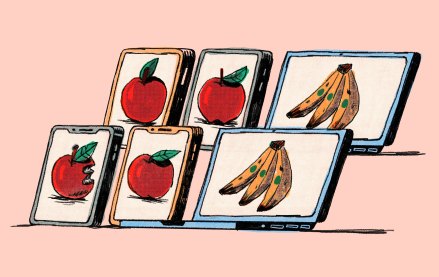
Mobile ads get knocked all the time. The cynics say mobile ads haven’t yet lived up to expectations. But there are a whole slew of brand marketers that would say otherwise. Marketers like Hair Club For Men, Adidas and Olympus prove that mobile ads do work, if done right.
A lot of brands go into mobile advertising with the wrong expectations. They run banner ads that don’t take advantage of the unique capabilities of today’s mobile devices. Things like click-to-call, GPS, the accelerometer and other functionalities that smartphones are built with give advertisers more tools and options to work with in mobile than ever before. Smart marketers are using these functionalities to their advantage in mobile ads.
Hair Club For Men’s mobile search and display campaign
Hair Club For Men turned to mobile because the company was interested in driving better marketing returns at a lower cost. Using Google mobile ads along with location extensions, click-to-call, site links and a specially tailored mobile website, Hair Club was able to grow its mobile conversions to 6 percent of total sales. Beyond mobile search ads, Hair Club used mobile display to drive clicks at a 72 percent lower average CPC when compared to mobile search. This helped achieve an ROI of 30:1. Hair Club attributes the success of the program to the mobile site that was created. Both the search and display ads lead consumers to the mobile site, which was tailored to focus on driving new customers to their call center to schedule an appointment. For example, a click-to-call phone number is displayed prominently at the top of the mobile site. Since not every potential customer is ready to make that call, the site also captures user’s contact information via a lead form, where they can be contacted at a later date by a Hair Club adviser.
Adidas “Light You Up” Mobile Campaign
The goal of the Adidas “Light You Up,” mobile banner ad campaign was to drive foot traffic to New York City’s Penn Station to view an Adidas promotional light show. Adidas, in collaboration with Mullen’s mediahub, targeted mobile users across multiple mobile platforms (Android, Windows, iOS), inviting them to Adidas’ light show, which introduced the Adidas Adizero F50 Soccer Cleat. The event featured Argentinian soccer player Lionel Messi. Using location-based targeting, Adidas was able to target users within a three-mile radius of Penn Station in relevant mobile applications. The ads read: “Adidas and Messi — After Dark Tonight.” When consumers clicked on the banner, they were taken to a landing page where there was a promotional video describing the event, the location and the time. The event drew thousands of attendees from the surrounding area.
Olympus “Captures Your Stories” Mobile Campaign
Olympus was trying to reach in-market camera shoppers to encourage consideration of the new Olympus PEN E-PM1 digital camera. To do so, the brand relied on rich media to create an ad unit with a dynamic photo reel. The photos gave consumers a 360-degree view of the camera and by clicking through to a landing page, consumers could experience the camera’s functionalities. For example, by switching to landscape mode, viewers could choose to view the filter or lens capability as if they are holding the camera in their own hands. Additionally, users could click three different buttons: “Buy,” “Specs” and “Share.” Olympus claims it was able to raise brand awareness and encourage consideration for the Olympus PEN E-PM1 digital camera.
Yamaha’s FZ-16 Mobile Ads
Yamaha’s FZ-16 motorcycle was built for mid-range buyers for whom a bike is as much a lifestyle accessory as essential transportation. Yamaha turned to mobile advertising for branding and driving purchase intent among young males in the market for a new motorcycle. After doing some research, Yamaha found that its target demo was using the simplest smartphones. The brand ran mobile ads on websites and in apps. Users who clicked through the banner ads came to a video landing page where they could see a full-length TV commercial. They could also view video reviews from those who have already purchased the bike. Wallpapers featuring different views of the bike, on the road and in the showroom, were also available for download. Yamaha’s mobile ads saw a 6.6 percent click-through rate.
UNICEF Breastfeeding Awareness Mobile Ads
United Nations Children’s Fund achieved a 6 percent conversion rate for its breastfeeding awareness campaign last year. Mobile display ads were targeted at specific content categories that were relevant to the 25-plus female, using a feature phone. Users who clicked through the banners were sent to a mobile landing page. This page was used to collect the name, email and phone number of users. Communication materials were then sent to this list. The click-through rate for this global campaign was 0.31 percent.
More in Marketing

Marketing Briefing: As the Google antitrust trial wraps, marketers weigh future of paid search ad spend
There is a sense from agency sources that marketers are paying more attention to their paid search efforts this year.

How Campbell’s navigates the burgeoning retail media landscape, even as it creates more walled gardens
Retail media’s growth spurt has made for more closed ecosystems, given there aren’t yet set standards across measurement and ad formats. Those closed networks have become one of the biggest challenges facing brands.

Digiday+ Research: Influencers see more Instagram engagement with still images than Reels
When it comes to sponsored posts featuring influencers on Instagram, images actually perform better than short-form videos.






